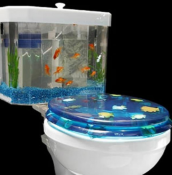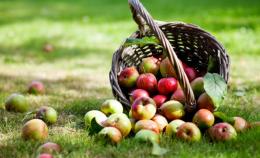Search
Login
How to store apples, how to store apples at home
Equally important in the shelf life is the correct harvest. Proper harvesting and storage of apples at home gives confidence that they will not succumb to the harmful effects of substances harmful to the body. In addition to this, with full confidence it can be argued that their taste, richness and pristine appearance will be fully preserved. Gardeners engaged in the cultivation of fruit and berry crops for more than one year have their secrets about the storage conditions of the crop in the winter. All storage options are varied. Which one to choose depends on personal prejudices and amenities.
Content:
- How to store apples for the winter - we study the factors that affect the shelf life of fruits video
- When to harvest video
- How to store apples - sorting the crop video
- Storage conditions for apples - which container is better to choose
- How to keep apples in the winter at home
How to store apples for the winter - we study the factors that affect the shelf life of fruits

The duration of preservation of apples directly depends on:
- from the selected storage option
- from a variety of preserved apples.
Some varieties can be stored for six months (of course, subject to the fulfillment of all storage standards), while preserving the taste, and some are not intended for storage, especially longer, even if the storage standards are met. When choosing seedlings in a specialized store for planting in the garden, it is very important to ask the seller about how long the fruits of a particular variety can be stored.

In addition, the name, quantity and quality of fertilizers applied to the soil of the garden affects the duration of the storage life of the crop:
- in cases when nitrogen fertilizers were applied in excess of the norm, apples cannot keep their density for a long time, and therefore their shelf life will be significantly reduced,
- when the soil has received phosphorus fertilizers in excess, the fruits will become especially coarse in density,
- the lack of enough calcium in the fruits will lead to a change in the color of the pulp (it will become much darker than usual),
- beneficially affect the color of the fruit of the apple tree potash fertilizers, introduced at a certain time of fruit development in the correct quantitative and percentage ratio.
It is worth paying attention to the fact that the harvest harvested from adult apple trees located outside the crown will be stored longer. This happens because it is in this part of the crown that the fruits receive the maximum amount of sunlight. This pattern does not apply to young trees, because they are more susceptible to disease.

Experienced gardeners are advised not to flood apple trees during ripening. Excess moisture and high temperature negatively affect the duration of storage of the crop.
The most famous varieties to be stored for long periods:
- Bogatyr
- Golden
- Mac,
- Antonovka,
- Zhigulevskoe
- Jonathan.
When to harvest
Early or late harvest affects not only the amount of vitamins contained in fruits, shelf life, appearance, but also taste. It is very important to collect fruit at a certain time and do it right.
Harvest from autumn and summer apple varieties should be removed only after ripened fruits begin to fall from the tree. The fruits of winter varieties are removed before they are fully ripe. They do this in order to insure themselves against the influence of low temperatures during possible unexpected frosts.

Harvesting begins producing from the fruits located at the very bottom of the tree, then tier by tier rising to the top. Each fruit is removed in the following way: having placed the fruit in the palm of your hand and lifting it up a bit, turn in any of the convenient directions, at this time the thumb with the apple should be located at the junction of the stem and the branch. When such a process proceeds without problems, we can safely conclude that the fruits have ripened and it is time for harvesting.
When harvesting, maximum care and accuracy must be exercised, since fruits with dents and deformation will not be stored for a long time.
Rules for collecting apples from a tree:
- fruits do not squeeze, do not scratch, do not wrinkle,
- do not pick the stalks
- the fruits are placed in a container carefully, without throwing, avoiding the formation of dents,
- harvesting is carried out only in dry weather.
How to store apples - sorting the crop

The next step will be the correct sorting, proceeding to it, the following sequence should be observed:
- first lay all the apples with flaws,
- then they are sorted by size, and it should be remembered that larger fruits are more prone to spoilage than those that are characterized by average sizes,
- it is also recommended to separate more ripe apples - it is advisable to eat them first.
It is better not to leave fruits with storage defects - they should be processed immediately after harvesting, apples from your garden will be an ideal raw material for making compotes, juices, preserves.
When sorting, one should not forget that the fruits collected from the southern side of old trees are better stored.
Storage conditions for apples - which container is better to choose

You can store apples in a wide variety of containers:
- boxes made of wooden boards or cardboard,
- plastic trellis drawers,
- bags made of plastic film.
The shape and size of containers may be different, the main requirement for containers of any kind is perfect cleanliness. In this regard, it is best to use new cardboard boxes and bags, plastic and wooden containers must be washed well, doused with steam, and dried. These measures will help prevent mold.
How to keep apples in the winter at home

The ideal place to store the apple crop is a room in which you can ensure a constant temperature, it should not be below 0 C and above +3 C. At the same time, the air should be quite humid - about 90%. Higher temperatures will speed up the yellowing process.
preparation of fruits for storage
Storage preparation consists in whitewashing the walls with lime and processing the floor with a solution of iron sulfate.
If the street temperature is high enough, then apples are first cooled, this can be done by placing them in a cellar or refrigerator. Do not wipe or wash the apples. As an additional protection, a layer of heated wax or natural fat is sometimes applied to the fruit.

Also for disinfecting fruits, you can:
- place them in a propolis alcohol solution for a couple of seconds,
- dip in a solution of four percent calcium chloride,
- wipe with a cotton cloth soaked in glycerin,
- soak in a pink solution of potassium permanganate.
Naturally, after such processing, apples should be washed thoroughly in warm water before eating.
storage in boxes and drawers in the basement

The most common option is to wrap each individual apple in paper before laying in a box or box, you can also shift each stacked row of paper. Spread apples with stalks up or in one of the sides. For shifting the rows, you can use not only paper, but also wood chips or straw. Apples isolated from each other are stored better - in case of damage to one of them, the possibility of decay to nearby fruits is excluded.

Talking about how to keep apples longer, one should recall another interesting and effective method of storage - in plywood crates with river sand. This method will require preliminary preparation. Several layers of newspapers are laid on the basement floor, the fruits are laid out in one layer. After 4-5 weeks, select the highest quality ones. Pure fresh river sand is poured into the prepared box with a 20-centimeter layer, apples are laid in rows and sprinkled with sand, so that each fruit is covered. Boxes can be stored compactly, installing one on top of another near the walls. To ensure ventilation, it is imperative to leave at least 2 cm of clearance between the drawers. If the sand is dry, the crop can be preserved until April-May, while the fruits will not lose the brightness of the aroma and remain juicy.
storage on the basement floor
If the crop is large enough, you can store it directly on the floor. To do this, it is necessary to line the straw with straw, lay apples in layers, pouring each of them with a layer of straw at least 2 cm thick.
in plastic bags

The modern storage option is in the basement, in plastic bags. At the same time, the selected apples are laid out in packages of 2-3 kg, without tying, they are brought into the basement. They give apples the opportunity to cool to room temperature throughout the day, then tightly knotted bags. Moisture from the fruits in this case does not disappear and they retain their original qualities.
You can store apples in the same basement with potatoes. Potato in this case sprouts more slowly, apples do not fade and do not lose flavor.
keep the crop in the kagat
In the absence of a basement, you can store apples throughout the winter directly on the site. The selected fruits will need to be laid out in canvas bags, tied with long ropes - their ends will be brought out and looking for the location of the bags will be very simple. Then in the garden you will need to dig a trench whose depth would be greater than the depth of freezing of the soil, that is, about half a meter. The bags are laid in a trench, from above it will be necessary to lay them with a layer of pine branches. This will ensure safety from rodents. Next, fall asleep a thick layer of soil. For additional insulation of the storage place, you can use branches cut from trees, fallen leaves.

The second option is storage in kagaty. In this case, bags are not required. Prepared fruits are laid in a ditch lined with a thick layer of straw, each of the rows laid is also covered with straw, after laying all the apples, a layer of straw is laid and the kagat is covered with soil. Apples during such storage throughout the winter retain flavor and remain crispy.
storage conditions for apples in a city apartment
If there is no way to store apples, except in the apartment, then food plastic bags will be quite suitable containers for storage. Selected apples fill the bags to half, cut small holes in them. For storage of bags use a warm, not freezing room.

Moisture evaporating from apples will be deposited by dew on the walls of the bags, with excessive losses, the fruits will absorb it back, while remaining quite fresh.





